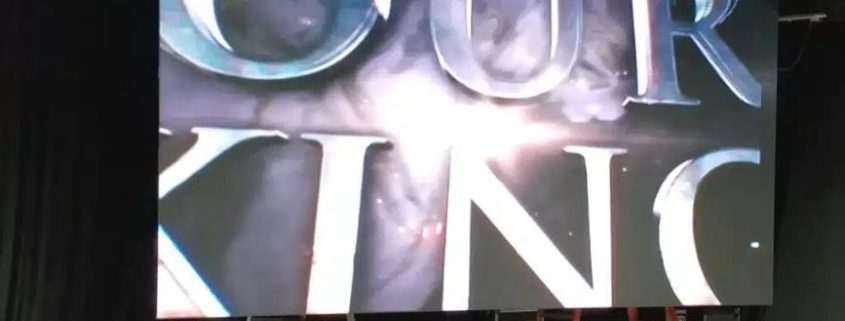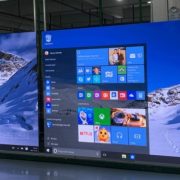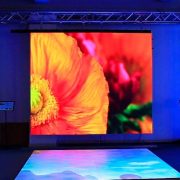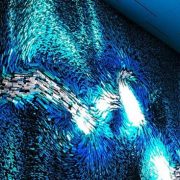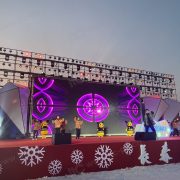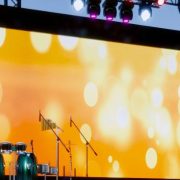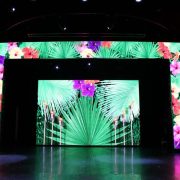Elevating Performances with Cheap Stage LED Screen
The advent of cheap stage LED screen has dramatically transformed the landscape of stage presentations, making immersive visual storytelling accessible to a broader range of productions. These cost-effective solutions offer a gateway to enhancing audience engagement, allowing even smaller venues and events to leverage the dynamic impact of LED technology. This introduction delves into how affordable LED screens are reshaping the way narratives are conveyed on stage, bringing vibrant visuals and interactive backdrops within reach of budget-conscious performers and event organizers.
What is the Stage LED Screen Pricing
In the dynamic world of live performances and events, the visual component plays a pivotal role in captivating the audience. The advent of LED technology has brought about a revolution in stage design, with cheap stage LED screens becoming increasingly popular due to their ability to deliver stunning visuals at a more accessible price point. However, the term “cheap” is relative and can vary widely based on several key factors that influence the pricing of stage LED screens. This comprehensive exploration delves into the elements that determine the cost of LED screens, providing insights into how size, resolution, and technology contribute to the overall pricing, without delving into direct price comparisons.
Size Matters
One of the most straightforward factors affecting the price of an LED screen is its size. Larger screens require more LED modules, supporting hardware, and structural components, which naturally increases the cost. The size of the screen needed for a stage is often dictated by the venue’s dimensions and the desired impact of the visual display. Larger venues or events aiming for a more immersive experience will necessitate bigger screens, thereby elevating the cost.
Resolution and Pixel Pitch
The resolution of an LED screen, determined by its pixel pitch (the distance between the centers of two adjacent pixels), is another critical factor in pricing. Screens with a smaller pixel pitch provide higher resolution images, which are essential for clarity, especially when the audience is close to the screen. High-resolution screens offer more detailed and vibrant visuals, making them ideal for displaying intricate graphics or live feeds. However, the technology and manufacturing precision required for high-resolution screens contribute to a higher price tag.
Technology and Features
The underlying technology and additional features of an LED screen also play a significant role in its pricing. Screens equipped with the latest LED technology, offering higher brightness, better color accuracy, and energy efficiency, tend to be more expensive. Additionally, features such as weatherproofing for outdoor use, flexible panels for creative stage designs, and advanced connectivity options for easier content management can further increase the cost.
Manufacturing Quality and Brand
The quality of manufacturing and the brand reputation can significantly influence the price of stage LED screens. High-quality screens that promise longevity, reliability, and superior performance are usually priced higher. Renowned brands that are known for their technology innovation and customer service often command a premium, reflecting their value in the market.
Operational Costs
While not directly related to the purchase price, the operational costs of running and maintaining an LED screen are essential considerations. Energy-efficient screens, while possibly more expensive upfront, can lead to lower electricity bills over time. Similarly, screens that are easier to install, configure, and maintain can reduce labor costs, making them a more cost-effective choice in the long run.
Market Trends and Demand
Market trends and demand can also influence the pricing of stage LED screens. High demand for certain sizes or types of screens can drive up prices, while advancements in technology can make older models more affordable. Seasonal fluctuations and industry events can also impact pricing, with discounts and promotions often available during off-peak times or trade shows.
Navigating the pricing landscape of stage LED screens requires a nuanced understanding of the various factors that contribute to their cost. From the physical dimensions and resolution to the underlying technology and operational considerations, each element plays a part in determining the price. By carefully considering these factors, buyers can make informed decisions that balance their budgetary constraints with the need for high-quality visual displays that enhance their stage presentations. In the realm of cheap stage LED screens, understanding these pricing dynamics is key to finding a solution that offers the best value without compromising on performance or impact.
Cheap Stage LED Screen: The 7 Advantages of LED Screen Rentals for Stages
In the vibrant world of stage productions, where visual storytelling and audience engagement are paramount, LED screens have emerged as a game-changer. However, the cost associated with purchasing these advanced displays can be prohibitive for many. This is where the concept of cheap stage LED screen rentals comes into play, offering a myriad of benefits that extend beyond mere cost savings. This comprehensive exploration delves into the seven key advantages of renting LED screens for stages, illustrating how this approach can enhance various events by providing cost-effectiveness, flexibility, and access to cutting-edge technology.
1. Cost-Effectiveness
The most immediate benefit of renting LED screens is the significant cost savings it offers. Instead of a substantial upfront investment required to purchase a screen, rentals allow event organizers to allocate their budgets more efficiently, paying only for the duration the screen is needed. This cost-effective solution is particularly advantageous for one-off events or productions that do not justify the expense of owning an LED screen.
2. Flexibility in Screen Size and Configuration
Renting LED screens provides unparalleled flexibility, allowing organizers to tailor the screen size and configuration to the specific needs of each event. Whether it’s a compact screen for a corporate seminar or an expansive display for a music festival, rental companies offer a variety of options to suit different stages and audience sizes. This adaptability ensures that the visual component of the event is always optimized for impact.
3. Access to the Latest Technology
Technology in the LED screen market evolves rapidly, with new features and improvements being introduced regularly. Renting allows event organizers to access the latest models with advanced capabilities, such as higher resolutions, superior color accuracy, and innovative designs like curved or flexible panels. This access to cutting-edge technology ensures that events remain at the forefront of visual presentation standards.
4. Professional Installation and Support
Renting an LED screen often includes professional installation, setup, and technical support from the rental company. This expert assistance guarantees that the screen is correctly configured for optimal performance, and any technical issues can be swiftly addressed. For event organizers, this means peace of mind and the ability to focus on other aspects of the event, knowing that the visual display is in capable hands.
5. Reduced Maintenance and Storage Concerns
Owning an LED screen comes with ongoing maintenance responsibilities and the need for proper storage when not in use. Rentals eliminate these concerns, as the rental company is responsible for the upkeep and storage of the screens. This advantage is particularly beneficial for organizations that lack the resources or space to maintain and store large LED screens.
6. Opportunity for Experimentation
Renting LED screens offers the freedom to experiment with different types and configurations of screens across various events without the long-term commitment of a purchase. This flexibility encourages creativity and innovation in stage design, allowing organizers to explore new ways to enhance their events visually.
7. Environmental Considerations
From an environmental perspective, renting LED screens can be seen as a more sustainable option. It promotes the shared use of resources, reducing the demand for manufacturing new screens and minimizing waste. For events and organizations committed to sustainability, this aspect of rentals aligns with broader ecological goals.
The advantages of renting LED screens for stages are manifold, encompassing cost savings, flexibility, access to the latest technology, professional support, and more. In an era where dynamic and engaging visual presentations are key to captivating audiences, the option to rent cheap stage LED screens presents a viable and attractive solution for event organizers. It allows them to deliver high-quality, memorable experiences while navigating budgetary constraints and technological advancements, ensuring that each event shines in its unique way.
Cheap Stage LED Screen: Navigating the Market for Stage LED Screens for Sale
In the ever-evolving landscape of live performances and events, the allure of LED screens has become undeniable. These vibrant displays not only enhance the visual experience but also serve as a dynamic backdrop that can transform any stage. However, the journey to acquiring a cheap stage LED screen for sale involves more than just finding a budget-friendly option. It’s about understanding the market, recognizing the value these screens bring to performance venues, and making a long-term investment that aligns with both financial and artistic objectives. This comprehensive guide delves into the intricacies of purchasing LED screens for stage use, offering valuable insights to navigate the market effectively.
Understanding the Value of LED Screens in Performance Venues
Before diving into the purchasing process, it’s crucial to appreciate the intrinsic value LED screens add to performance venues. Beyond their immediate visual appeal, these screens offer versatility in stage design, allowing for quick and seamless changes in scenery and ambiance. They also extend the creative possibilities for directors and designers, enabling the integration of multimedia elements into live performances. Moreover, LED screens can significantly enhance audience engagement, making every seat in the house the best seat for visual content.
Assessing Long-Term Investment
Purchasing an LED screen is a substantial investment, and like any long-term investment, it requires careful consideration of several factors:
- Durability and Reliability: Opt for screens known for their longevity and minimal maintenance needs. Durable screens ensure a lower total cost of ownership over time.
- Energy Efficiency: Consider the energy consumption of the screen, as this will impact operational costs. More energy-efficient models can offer significant savings in the long run.
- Technical Support and Warranty: Evaluate the warranty and technical support services provided by the manufacturer or supplier. Reliable after-sales support can mitigate potential downtime and repair costs.
Market Research and Supplier Evaluation
Navigating the market for stage LED screens involves thorough research and supplier evaluation. Start by identifying reputable manufacturers and suppliers with a proven track record in the industry. Attend trade shows, read industry publications, and seek recommendations from peers to gather insights. When evaluating suppliers, consider their portfolio of past projects, customer testimonials, and their ability to provide customized solutions.
Total Cost of Ownership
When considering a cheap stage LED screen for sale, it’s essential to look beyond the initial purchase price and assess the total cost of ownership (TCO). This includes installation costs, energy consumption, maintenance expenses, and potential repair costs. A screen that may appear more expensive upfront but offers lower TCO could be a more financially sound choice in the long term.
Compatibility and Integration
Ensure that the LED screen you choose is compatible with existing systems and infrastructure within the venue. This includes compatibility with control systems, content management software, and other AV equipment. Seamless integration is key to maximizing the screen’s utility and ensuring smooth operation during events.
Customization and Scalability
Consider whether the LED screen offers customization options and scalability. The ability to customize the screen size, shape, and resolution can be invaluable for venues that host a diverse range of events. Scalability allows for future expansion or reconfiguration of the screen to meet evolving needs.
Training and Education
Finally, factor in the need for training and education for the technical team responsible for operating the LED screen. Understanding the full capabilities of the screen and how to troubleshoot common issues can enhance its value and utility in a performance setting.
Purchasing a stage LED screen is a significant decision that impacts the visual dynamics of performances and the financial health of the venue. By considering the long-term value, assessing the total cost of ownership, and ensuring compatibility and scalability, venues can make informed choices that enhance their offerings and captivate audiences. Navigating the market for a cheap stage LED screen for sale requires a balance between cost considerations and the potential to elevate the performance experience, making it a strategic investment in the venue’s future.
Cheap Stage LED Screen: Creative LED Screen Stage Design Concepts
In the realm of stage production, the integration of LED screens has opened up a new frontier of creative possibilities, transforming traditional performances into immersive experiences. The advent of cheap stage LED screens has democratized access to this technology, allowing even smaller venues and productions to incorporate these dynamic displays into their stage designs. This exploration delves into innovative design concepts that leverage the versatility and visual appeal of LED screens, enhancing the impact of performances and events across various genres.
1. Multi-Layered LED Backdrops
One of the most striking uses of LED screens in stage design is the creation of multi-layered backdrops. By positioning screens at different depths on the stage, designers can craft intricate, three-dimensional environments that add depth and complexity to the visual narrative. This technique can be used to simulate natural landscapes, urban settings, or abstract geometrical patterns, providing a dynamic canvas that evolves with the performance.
2. Interactive LED Floors
Extending the LED experience to the stage floor opens up a realm of interactive possibilities. LED floors can respond to the movements of performers, creating real-time visual effects that enhance dance routines, dramatic scenes, or musical performances. From simulating water ripples to creating patterns that follow the performers’ steps, interactive floors can add a layer of magic and engagement to any performance.
3. Immersive 360-Degree Environments
For venues with the capability to surround the audience with screens, creating a 360-degree LED environment can offer an unparalleled immersive experience. This setup can transport the audience to different worlds, making them feel as though they are part of the scene. Whether it’s the vastness of space, the depths of the ocean, or a bustling cityscape, a 360-degree design can turn a performance into an unforgettable journey.
4. Augmented Reality Enhancements
Combining LED screens with augmented reality (AR) technology can blur the lines between the physical and digital worlds. By overlaying digital content onto live performances, designers can create illusions, enhance storytelling, and introduce fantastical elements that interact with performers in real-time. This fusion of technology and artistry can elevate narratives and deliver awe-inspiring moments.
5. Modular and Movable Screens
The use of modular and movable LED screens offers flexibility in stage design, allowing for dynamic changes in the visual landscape. Screens can be reconfigured or moved during the performance to reveal new scenes, shift perspectives, or create visual surprises. This adaptability makes LED screens a powerful tool for directors looking to maintain a dynamic pace and engage the audience throughout the show.
6. Transparent and Mesh LED Screens
Transparent and mesh LED screens provide a unique aesthetic by allowing light and shadow to play through the display, creating a sense of depth and texture. These screens can be used as overlays, adding a layer of visual complexity to the stage without completely obscuring the performers or the set behind them. This subtle interplay of visibility and imagery can add a sophisticated touch to any stage design.
7. Themed Visual Narratives
LED screens offer the opportunity to craft themed visual narratives that complement the storyline or musical journey of the performance. From historical epochs to futuristic landscapes, designers can curate a series of visuals that guide the audience through the narrative, enhancing the emotional and thematic resonance of the piece.
8. Synchronized Light and Visual Shows
Integrating LED screens with synchronized lighting effects can amplify the visual impact of the performance. By coordinating the content on the screens with lighting cues, designers can create a cohesive visual spectacle that enhances the mood, rhythm, and intensity of the performance. This synchronization can turn the stage into a living canvas, pulsating with energy and emotion.
Cost-Effective Solutions for Cheap Stage LED Screen
In the dynamic world of stage production, the quest for visually stunning yet affordable solutions is perpetual. The advent of cheap stage LED screens has been a game-changer, offering a cost-effective avenue to create immersive environments that captivate audiences without necessitating a hefty financial investment. This comprehensive exploration delves into the realm of affordable options for stage background screens, highlighting how these innovative solutions can transform any performance space into a mesmerizing spectacle.
1. Leveraging Modular LED Panels
One of the most cost-effective strategies involves the use of modular LED panels. These panels offer the flexibility to construct screens of various sizes and shapes, tailored to the specific requirements of the stage design. By assembling a background screen from individual modules, production teams can optimize their budgets, investing in just the right number of panels needed for the desired impact. This modular approach not only ensures financial efficiency but also allows for creative configurations that enhance the visual narrative of the performance.
2. Exploring Second-Hand Markets
The second-hand market for LED screens presents a viable option for budget-conscious productions. Many companies upgrade their equipment regularly, selling off their older models at reduced prices. These pre-owned screens, often in excellent condition, can provide the same high-quality visuals as newer models but at a fraction of the cost. It’s crucial, however, to thoroughly vet the condition and performance of second-hand screens to ensure they meet the production’s standards.
3. Utilizing Rental Services
For productions that require an LED screen for a limited period, rental services offer a cost-effective solution. Renting allows access to the latest technology without the long-term financial commitment of a purchase. Additionally, rental companies typically provide technical support and installation services, further reducing the logistical and financial burden on the production team. This option is particularly appealing for one-off events, tours, or productions with varying stage design needs.
4. Embracing DIY Solutions
For the creatively inclined and technically adept, DIY LED screen projects can lead to significant cost savings. With a basic understanding of LED technology and some ingenuity, production teams can build custom screens that fit their specific needs. Online tutorials, forums, and communities offer a wealth of knowledge and guidance for such projects. While this approach requires more time and effort, the potential for customization and cost reduction makes it an attractive option for smaller productions or those with unique visual requirements.
5. Opting for Lower Resolution Screens
While high-resolution screens offer stunning clarity, they also come with a higher price tag. In many stage settings, especially those with larger viewing distances, a slightly lower resolution screen can still provide a visually impactful experience without compromising the overall effect. Opting for screens with a slightly larger pixel pitch can result in substantial savings, making this a practical consideration for productions looking to balance visual quality with budget constraints.
6. Collaborating with Sponsors
Another innovative approach to offsetting the cost of stage background screens involves collaboration with sponsors. Companies looking to promote their brand or products may be willing to partially or fully fund the LED screen in exchange for advertising opportunities during the event. This symbiotic relationship can provide financial relief for the production while offering valuable exposure for the sponsor.
7. Investing in Multi-Use Equipment
Investing in LED screens that can serve multiple purposes beyond the stage background can also be a cost-effective strategy. Screens that are adaptable for use in different sections of the venue, for various types of events, or even as part of the set design, offer a better return on investment. This versatility ensures that the equipment remains a valuable asset, utilized to its full potential across a wide range of productions.
Navigating the financial challenges of stage production requires creativity, resourcefulness, and a keen understanding of available technologies. The advent of cheap stage LED screens has opened up new possibilities for creating immersive environments on a budget. By exploring modular solutions, second-hand markets, rental options, DIY projects, and strategic collaborations, production teams can achieve visually stunning stage backgrounds that captivate audiences without breaking the bank. In the end, the artistry of the performance, coupled with innovative and cost-effective screen solutions, can lead to unforgettable experiences that resonate with audiences long after the curtain falls.
Cheap Stage LED Screen: Finding Value in LED Backdrop Screen Prices
In the realm of stage production, the visual component plays a pivotal role in captivating the audience and enhancing the overall experience. LED backdrop screens have become an indispensable tool in this regard, offering vibrant colors, dynamic content, and immersive environments. However, the cost associated with acquiring such technology can be a significant hurdle for many productions. The concept of a cheap stage LED screen is thus not merely about finding the lowest price but about uncovering the best value—balancing cost with quality to achieve an optimal visual impact. This comprehensive exploration delves into the considerations for investing in LED backdrop screens, emphasizing the pursuit of high visual quality at a reasonable cost.
1. Understanding the Spectrum of Quality and Price
The market for LED screens is vast, with options ranging from high-end, feature-rich models to more budget-friendly alternatives. The first step in finding value is understanding that price is often a reflection of factors such as resolution, brightness, durability, and the presence of advanced features like weatherproofing or flexible panels. A higher price tag might indicate a screen capable of delivering superior visual quality or longer lifespan, which could be a worthwhile investment for productions aiming for top-tier presentation standards.
2. Assessing the Specific Needs of Your Production
Not every stage production requires the highest resolution or the brightest screen available. The specific needs of your production—such as the size of the venue, the typical viewing distance, and the nature of the content being displayed—should guide your investment. For instance, a backdrop screen used for abstract visuals in a concert setting may not need the same level of detail as one used for high-definition video playback in a corporate event.
3. Exploring Modular and Scalable Solutions
One way to achieve value is to invest in modular and scalable LED screen systems. These systems allow you to tailor the size and shape of your backdrop to your current needs, with the option to expand or reconfigure as future productions require. This flexibility means you can start with a more modest setup and grow your capabilities over time, spreading the investment out and ensuring that you’re only paying for what you need, when you need it.
4. Considering the Total Cost of Ownership
When evaluating LED backdrop screen prices, it’s crucial to consider the total cost of ownership (TCO), which includes not just the initial purchase price but also factors like energy consumption, maintenance costs, and potential repair expenses. A screen that’s cheaper upfront but more expensive to operate and maintain might not offer the best value in the long run. Screens with energy-efficient designs and robust build quality can lead to significant savings over time, making them a more valuable investment.
5. Seeking Out Competitive Offers and Bulk Discounts
For productions requiring multiple screens or those looking to invest in LED technology as a long-term asset, seeking competitive offers and bulk discounts can lead to substantial savings. Suppliers and manufacturers often provide favorable pricing for larger orders, and negotiating such deals can bring the cost of high-quality screens down to a more budget-friendly level.
6. Exploring Financing and Rental Options
For productions that cannot justify the outright purchase of an LED backdrop screen, financing and rental options present viable alternatives. Financing can spread the cost over time, making it easier to afford a higher-quality screen without a significant upfront investment. Rentals, on the other hand, offer the flexibility to use top-of-the-line screens for specific events without the long-term financial commitment, providing access to the latest technology as needed.
7. Leveraging Technology Advances and Market Trends
The LED screen industry is rapidly evolving, with new advancements leading to more cost-effective solutions. Staying informed about the latest technology trends can help you identify emerging products that offer better value. Additionally, market trends, such as increased competition among manufacturers or surplus inventory, can create opportunities to purchase high-quality screens at reduced prices.
Designing Engaging Stage Screen Backgrounds
In the world of stage production, the backdrop is more than just a setting—it’s a canvas that brings the performance to life, setting the tone, enhancing the narrative, and engaging the audience. With the advent of cheap stage LED screens, this canvas has evolved from static scenery to dynamic landscapes, offering endless possibilities for creativity and storytelling. This comprehensive exploration delves into the artistry behind designing engaging stage screen backgrounds, highlighting how these innovative tools can complement the theme and mood of various performances, all while maintaining budgetary considerations.
Understanding the Narrative Power of Backgrounds
The first step in designing an engaging stage screen background is to understand its narrative power. A well-crafted background does more than fill space; it supports the story, enhances the emotional impact, and can even become a character in its own right. Whether it’s a bustling cityscape, a serene landscape, or an abstract composition, the background sets the scene for the action and contributes significantly to the audience’s immersion in the performance.
Integrating Theme and Mood
A successful stage screen background seamlessly integrates with the overall theme and mood of the performance. This requires a deep understanding of the narrative, characters, and emotional arcs. For a romantic ballet, soft, flowing visuals might enhance the tender mood, while a rock concert might call for bold, dynamic imagery. The key is to ensure that the background complements, rather than competes with, the on-stage action.
Leveraging Technology Creatively
Cheap stage LED screens offer a range of technological features that can be creatively leveraged to enhance background designs. High-resolution displays can render intricate details, while wide color gamuts bring vibrancy to the visuals. Features like variable brightness and contrast can be used to create depth and texture, adding a three-dimensional feel to the background. Designers can also experiment with motion graphics and video content to add dynamism to the scene.
Collaboration with Directors and Choreographers
Designing an engaging background is a collaborative process that involves close coordination with the director, choreographer, and other creative team members. This collaboration ensures that the background aligns with the artistic vision and complements the choreography and staging. Regular discussions and revisions are part of the process, allowing for a cohesive and harmonious integration of the background into the overall production.
Customization for Each Performance
Each performance is unique, and so should be its background. Customization is key to creating a background that fits the specific needs of a performance. This might involve tailoring the visuals to the dimensions of the stage, adjusting the content to suit the pacing of the show, or creating bespoke animations that synchronize with the music or dialogue. The flexibility of LED screens makes such customization not only possible but also cost-effective.
Interactive and Reactive Designs
One of the most exciting possibilities offered by LED screens is the ability to create interactive and reactive backgrounds. Using sensors and software, the background can respond to the movements and actions of the performers, creating a dynamic interplay between the screen and the stage. This level of interaction can elevate the audience’s experience, making the performance more engaging and memorable.
Testing and Iteration
The design process doesn’t end with the initial creation. Testing and iteration are crucial steps to ensure that the background performs as intended under stage conditions. This might involve adjusting the brightness to suit the lighting, fine-tuning the timing to match the performance, or making last-minute changes based on feedback from dress rehearsals. The goal is to ensure that the background enhances the performance and contributes to a seamless audience experience.
Designing engaging stage screen backgrounds is a complex yet rewarding endeavor that blends artistry with technology. By understanding the narrative power of backgrounds, integrating the theme and mood of the performance, and leveraging the creative possibilities of cheap stage LED screen, designers can craft captivating visuals that elevate the storytelling and immerse the audience in the world of the performance. Through collaboration, customization, and careful iteration, the stage screen background becomes an integral part of the production, enhancing its impact and leaving a lasting impression on the audience.
FAQs about Cheap Stage LED Screen
Cost: LED screens can be more expensive upfront compared to other display technologies like LCDs, especially for high-resolution models.
Energy Consumption: While LED screens are more energy-efficient than older technologies, they can still consume a significant amount of power, especially large outdoor displays.
Brightness Variability: Inconsistent brightness and color calibration across panels can be an issue, requiring regular maintenance to ensure uniformity.
Viewing Angles: Some LED screens may have limited viewing angles, with color and brightness fidelity dropping off when viewed from the side.
Heat Generation: LED screens, especially larger ones, can generate a considerable amount of heat, necessitating adequate cooling systems to prevent overheating.
A stage screen is a large display used in theatrical productions, concerts, and other live events to enhance the visual experience. These screens can display dynamic backgrounds, close-ups of performers, or other visual effects to complement the performance. Stage screens can be made from various technologies, including LED, projection, and more, depending on the requirements of the event.
LED screen types refer to the various configurations and technologies used in LED displays, including:
Direct View LED Screens: Composed of numerous small LED modules that emit light directly to the viewer, offering high brightness and contrast.
Indoor LED Screens: Designed with finer pixel pitches for close viewing distances, suitable for indoor environments like malls, airports, and conference halls.
Outdoor LED Screens: Built to withstand environmental elements with higher brightness levels to be visible in daylight, used in billboards, sports arenas, and outdoor concerts.
Flexible LED Screens: Feature bendable LED panels that can conform to curved surfaces, allowing for creative installations.
The frame rate of LED screens refers to the number of frames or images displayed per second. The typical frame rate for LED screens can vary widely depending on the application, ranging from 30 to 60 frames per second (fps) for standard displays. However, for high-end or specialized applications like broadcasting or gaming, frame rates can be higher, reaching up to 120 fps or more to ensure smoother motion and reduced motion blur.

As the founder and leading expert of Shine LED Display, I, Ponsent Wu, bring over a decade of specialized experience in the LED display industry. My brand is dedicated to providing top-tier LED display solutions, ranging from high-definition screens for commercial use to customized installations for various events and projects. At Shine LED Display, we pride ourselves on offering a comprehensive service that includes design, configuration, installation, and expert troubleshooting. Whether you’re looking to enhance your business with a vibrant advertising display, create an unforgettable event with dynamic visuals, or have specific questions and needs regarding LED technology, I am here to ensure your vision is brilliantly realized. For any inquiries or to discuss your LED display needs, don’t hesitate to contact me at any time. Your satisfaction is the beacon that guides us at Shine LED Display.

